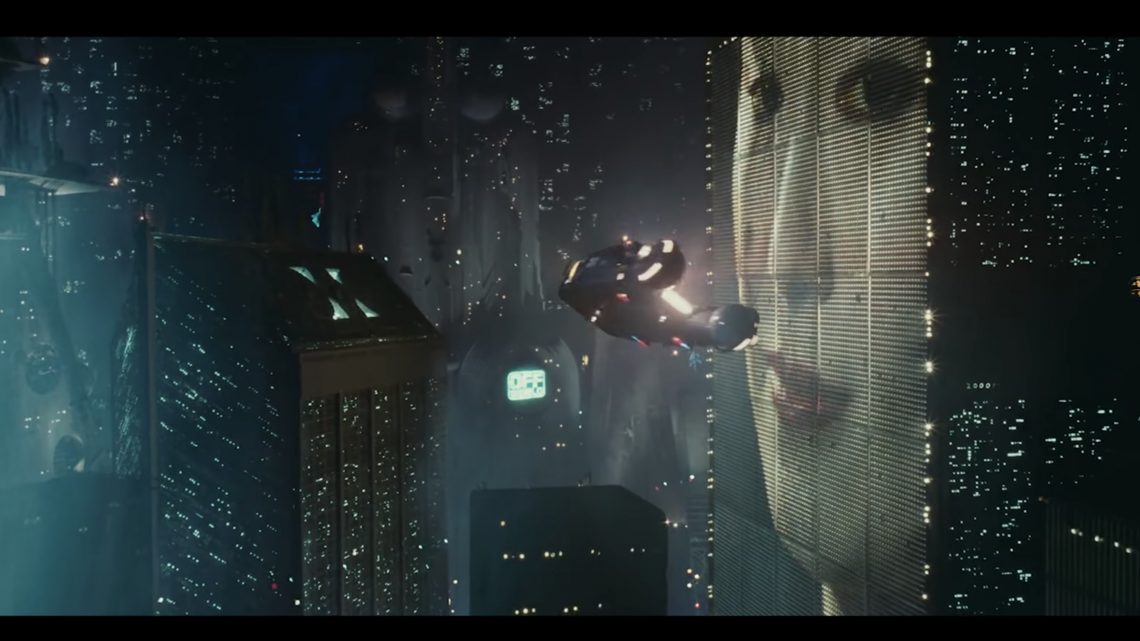
The Future Is Now: What ‘Blade Runner’ Got Right and Wrong About 2019
November 25, 2019Can you believe it? We made it, everybody: We're in The Future.
At least, The Future as depicted in the original Blade Runner, released in 1982 but set in November 2019. (Thanks to a scene in Denis Villeneuve’s Blade Runner 2049, we also now know the exact date that events from the first film kicked off: November 20, 2019—this past Wednesday.) The dark vision of Los Angeles originally imagined by director Ridley Scott, cinematographer Jordan Cronenweth, screenwriter Hampton Fancher, and concept artist Syd Mead has finally arrived.
Or has it? In 1982, the United States was losing a trade war with Japan, Michael Jackson released Thriller, and TIME’s Person of the Year was a computer. This was an era when dystopian visions of the future were limited to the postmodern pages of New Wave sci-fi novels by the likes of Philip K. Dick (whose novel, Do Androids Dream of Electric Sheep? was the inspiration for Blade Runner) and Harlan Ellison, or garishly pictured in comic books like Judge Dredd. Yet as a touchstone for imaging what “the future” might realistically look like, Blade Runner was able to transcend decade and genre and has since become perhaps the most influential science fiction movie of all time, even more so than fellow forward-thinking flicks like Metropolis, 2001: A Space Odyssey, or Star Wars.
But how much of the technology and culture of Blade Runner actually came true, for better or worse? Here’s a look back at how well (or not) the film’s predictions turned out:
“'More human than human' is our motto”
In Blade Runner, “replicants” are synthetic, genetically engineered humans whose superior strength, agility, and physical features make them ideal for slave labor off-Earth, in hazardous industrial environments, combat zones, and the colonization of other planets. Enough of them had gone rogue and escaped to Earth by the events of Blade Runner that entire divisions of police officers were assigned to track down replicants and “retire” (execute) them.
In our 2019, modern technology isn’t exactly at the point where robots are indistinguishable from human beings in appearance and personality, but we’re close. Amid a rapid population decline, Japan is continuously honing their robot skills in an attempt to bring to life better hotel employees, personal companions, and even government bureaucrats. And if the engineers at Boston Dynamics ever stop attacking their quadruped robots—which are capable of running at speed, opening doors, and leaping over obstacles—maybe we’ll one day end up with more machines like Roy Batty, who learns to value life, instead of machines like, well, the Terminator.
The environment sucks so bad, we have to find a new planet
No one explicitly explains how terrible the climate has become in Blade Runner, but we get the picture: Its Los Angeles is way overpopulated, streets are filled with trash, and the smoggy pollution is thick enough to keep the city in perpetual darkness. This has become a world where the sun is only visible from the penthouse offices of the Tyrell Corporation, which literally looms over Los Angeles in pyramid-shaped megastructures that would make Ozymandias proud.
It’s always raining in Blade Runner (partially to mask imperfections in the film set, according to Ridley Scott) and things have gotten so bad that everybody’s trying to leave, for “the chance to begin again in a golden land of opportunity and adventure” in off-world colonies that are never seen in the film—and which may not even be so great. Roy’s famous tears-in-rain swan song mentions “attack ships on fire,” implying gigantic space battles. And why is such heavy advertising (for example, billboards on blimps) needed to sell people on the idea of a supposed paradise?
Here in the real world, we don’t have the opportunity to leave Earth just yet—the closest we can get is the International Space Station or, if you’re Elon Musk, an electric sports car hurtling through space—but luckily, we still have some time before the environment is basically ruined forever: Eleven years to be exact, according to the Intergovernmental Panel on Climate Change, which estimates that carbon dioxide emissions require a 45% decrease by 2030 to prevent “irreparable damage.” In order to make that deadline, many scientists believe that political steps need to be taken in the next 18 months; otherwise, Earth will get to join Roy Batty’s memories as another thing “lost in time, like tears in rain.”
No flying cars yet, but drones for sure. And maybe taxis?
Flying cars called “spinners,” capable of driving on the street as well as accomplishing vertical take-off and landing, transport people in Blade Runner using three engines: internal combustion, jet, and anti-gravity. (Although shouldn’t they be called “flyers” or something? Regular car wheels spin; these machines just sort of float up into the air.) Designer Syd Mead, who also helped give Aliens and Tron their signature visual styles, conceptualized Blade Runner’s spinners as a mashup of an automobile and a helicopter, resulting in a creation that helped inspire similar vehicles in later sci-fi films like The Fifth Element and Episode 1, 2, and 3 of Star Wars.
Meanwhile in present-day Munich, a German tech startup named Lilium recently tested the first all-electric “air taxi,” which has the potential to carry five passengers at speeds of 186 miles per hour, with zero operating emissions. Its goal is to begin commercial service by 2025. If you’d rather not risk making the trip yourself and would instead prefer things come to you, Amazon Prime “Air” delivery service is supposed to arrive sometime late this year, where unmanned drones will allegedly fly individual packages to people in 30 minutes or less. While waiting for these flying machines to become accessible, we’ll just have to settle for self-driving cars instead (if they don’t kill us first).
Digital advertising is everywhere
Nearly 200-foot-tall blinking digital billboards for Coca-Cola and Pan Am shine out over the film's Los Angeles, while neon signs for Atari, RCA, and Cuisinart flood the crowded streets. Advertisements are everywhere in Blade Runner (even if a few of the companies, like Pan Am or Atari, are not), much like today. Audiences who watched Blade Runner 2049 in 2017 at the Regal LA Live on Olympic Boulevard could walk outside after the film and look up at an 80-or-so-foot tall Coca-Cola advertisement on the side of the Ritz-Carlton, just like in the movie. As LED technology becomes cheaper and easier to implement, advertising is increasingly going digital, on everything from billboards to window displays.
Blade Runner imagined the futuristic-looking neon vibes of 1980s Tokyo would become widely adopted, even in Los Angeles. But strangely, these predictions for future technology didn’t extend to communication; while the film was able to predict the rise of video chat, none of the filmmakers seemed to envision the idea that one day, we’d all have smartphones. Instead, Rick Deckard (Harrison Ford) has to use a payphone to reach Rachael (Sean Young) at The Snake Pit bar, which costs him $1.25 for a 30-second video call. Can you imagine how much it must cost to call off-world?
Asian cuisine as a street food staple
Asian food was still largely exoticized in 1980s Hollywood, either as a mysterious high-brow delicacy (Molly Ringwald’s character is perceived as elitist by her fellow classmates when she brings sushi for lunch in 1985’s The Breakfast Club) or as cheap and Americanized, eaten in back alleys at restaurants like Dragon of the Black Pool while discussing supernatural “Chinese black magic” in 1986’s Big Trouble in Little China or begrudgingly ordered in A Christmas Story (1983) after the neighbor’s dogs tore apart the Christmas turkey.
Sure, Deckard demonstrates some questionable chopstick skills while dining at the White Dragon Noodle Bar in downtown Los Angeles. But Blade Runner grants Asian food the dignity of casual consumption, a sense of normalcy within the American landscape, when it appears at the beginning of the movie. The restaurant is popular (Deckard has to wait for a seat), and when police officer Gaff (Edward James Olmos) is finally able to drag Rick out of there, the grizzled former cop brings his bowl with him. And today, just like Rick, if you’re stopping by ramen hotspots like Daikokuya or Tsujita LA in Los Angeles for noodles during lunch and dinner rush, you’ll also be waiting for a seat.
Thirty years ago, Blade Runner presented a vision of 2019 that has become unusually prescient. Only time will tell whether Blade Runner 2049, set three decades from now, will be as close to what the world looks like then. (Hopefully not at all, with most people in the movie having to basically eat bugs harvested from “protein farms” and entire cities, like San Diego, being converted to trash dumps.) From then to now, it’s tough for us to know the future. But then again, who does?


